Showing Spotlights 57 - 64 of 546 in category All (newest first):
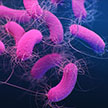 One interesting alternative to traditional antibiotics is phage therapy. Bacteriophages are viruses that selectively target and solely kill bacteria, even multi-drug resistant ones. However, scientists don't yet have the full picture of how it works and what the potential risks are. In view of these challenges, researchers have considered an alternative approach where phages are destroyed immediately after use, thus controlling dosage and circumventing undesirable consequences while maintaining the advantages of whole phage as antibacterial delivery vehicle.
One interesting alternative to traditional antibiotics is phage therapy. Bacteriophages are viruses that selectively target and solely kill bacteria, even multi-drug resistant ones. However, scientists don't yet have the full picture of how it works and what the potential risks are. In view of these challenges, researchers have considered an alternative approach where phages are destroyed immediately after use, thus controlling dosage and circumventing undesirable consequences while maintaining the advantages of whole phage as antibacterial delivery vehicle.
May 30th, 2022
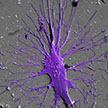 We are in the early stages of neural computing and have time to think through the ethical issues involved. Among other things, if neural computers become common, we will grapple with tissue donation issues. Scientists have found that human neurons were faster at learning than neurons from mice. Might there also be differences in performance depending on whose neurons are used? Might Apple and Google be able to make lightning-fast computers using neurons from our best and brightest today? Would someone be able to secure tissues from deceased genius's like Albert Einstein to make specialized limited-edition neural computers?
We are in the early stages of neural computing and have time to think through the ethical issues involved. Among other things, if neural computers become common, we will grapple with tissue donation issues. Scientists have found that human neurons were faster at learning than neurons from mice. Might there also be differences in performance depending on whose neurons are used? Might Apple and Google be able to make lightning-fast computers using neurons from our best and brightest today? Would someone be able to secure tissues from deceased genius's like Albert Einstein to make specialized limited-edition neural computers?
May 24th, 2022
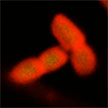 The antibiotic resistance crisis has been ascribed to the overuse and misuse of these medications, as well as a lack of motivation to develop new drugs. In the field of nanotechnology, a variety of innovative materials are being studied to evaluate their potential applications as antimicrobial agents. Recently, researchers have shown that boron nitride nanosheets as a nano-antibacterial agent displays antibiotic-like activities and BN nanosheets were found to show potent antibacterial efficiency in five multidrug resistant bacteria strains.
The antibiotic resistance crisis has been ascribed to the overuse and misuse of these medications, as well as a lack of motivation to develop new drugs. In the field of nanotechnology, a variety of innovative materials are being studied to evaluate their potential applications as antimicrobial agents. Recently, researchers have shown that boron nitride nanosheets as a nano-antibacterial agent displays antibiotic-like activities and BN nanosheets were found to show potent antibacterial efficiency in five multidrug resistant bacteria strains.
May 17th, 2022
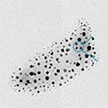 The two-dimensional carbon allotrope graphdiyne is capable of inhibiting broad-spectrum bacterial growth while exerting moderate cytotoxicity on mammalian cells. Researchers now demonstrate a high-performance bactericid with graphdiyne functionalized by silver nanoparticles. The material killed the bacteria through membrane destruction and reactive oxygen species production. These findings present an avenue to harness 2D materials to stabilize metal nanoparticles as a promising option for combating evolving bacteria.
The two-dimensional carbon allotrope graphdiyne is capable of inhibiting broad-spectrum bacterial growth while exerting moderate cytotoxicity on mammalian cells. Researchers now demonstrate a high-performance bactericid with graphdiyne functionalized by silver nanoparticles. The material killed the bacteria through membrane destruction and reactive oxygen species production. These findings present an avenue to harness 2D materials to stabilize metal nanoparticles as a promising option for combating evolving bacteria.
May 11th, 2022
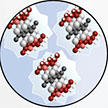 Researchers have have reported the synthesis process and biomedical applications of a novel nanomaterial for in vivo treatment of vasculopathy - a general term used to describe any disease affecting blood vessels. Through their innovative approach using rational design and synthesis strategies, the researchers developed intrinsically immunomodulatory and anti-inflammatory tantalum carbide MXene quantum dots. The team is confident that this new nanomaterial could reduce or even avoid the need for anti-rejection drugs for heart transplant patients.
Researchers have have reported the synthesis process and biomedical applications of a novel nanomaterial for in vivo treatment of vasculopathy - a general term used to describe any disease affecting blood vessels. Through their innovative approach using rational design and synthesis strategies, the researchers developed intrinsically immunomodulatory and anti-inflammatory tantalum carbide MXene quantum dots. The team is confident that this new nanomaterial could reduce or even avoid the need for anti-rejection drugs for heart transplant patients.
May 9th, 2022
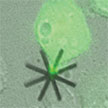 The mechanical properties of cells and their intracellular mechanical loads are as relevant for a cell's accurate functioning as the biochemical portion of the cell. This offers a novel perspective that addresses the study of cell mechanics and even the alteration of the mechanical equilibrium of the cells by using silicon chips as an intracellular intervention mechanism. These 'echanical drugs' open the possibility to determine and measure intracellular forces and internalization routes. They can also produce intracellular mechanical perturbations by altering the cell cycle and even, if they are designed accordingly, destroy the cells.
The mechanical properties of cells and their intracellular mechanical loads are as relevant for a cell's accurate functioning as the biochemical portion of the cell. This offers a novel perspective that addresses the study of cell mechanics and even the alteration of the mechanical equilibrium of the cells by using silicon chips as an intracellular intervention mechanism. These 'echanical drugs' open the possibility to determine and measure intracellular forces and internalization routes. They can also produce intracellular mechanical perturbations by altering the cell cycle and even, if they are designed accordingly, destroy the cells.
May 2nd, 2022
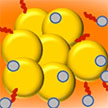 Researchers have developed a point-of-care, portable, rapid, and cost-effective test for clinical diagnosis of sodium, which uses a paper printed colorimetric sensor that is based on Curcumin-functionalized copper (CuC) nanoparticles. They demonstrate that the proposed CuC paper strip can be used for detecting Na+ concentration within the whole physiological range in both blood serum and urine. Sodium is a vitally important electrolyte present in all body fluids and it plays a crucial role in maintaining normal body function, including nerve and muscle function.
Researchers have developed a point-of-care, portable, rapid, and cost-effective test for clinical diagnosis of sodium, which uses a paper printed colorimetric sensor that is based on Curcumin-functionalized copper (CuC) nanoparticles. They demonstrate that the proposed CuC paper strip can be used for detecting Na+ concentration within the whole physiological range in both blood serum and urine. Sodium is a vitally important electrolyte present in all body fluids and it plays a crucial role in maintaining normal body function, including nerve and muscle function.
Apr 26th, 2022
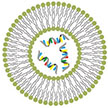 A recent review article highlights how nanoscience and nanotechnology can solve three acute problems in the treatment, prevention, and diagnosis of viruses like SARS-CoV-2: 1) synthesis of novel drugs and vaccines based on nanocarriers with enhanced efficiency and reduced side-effects for the treatment of the current pandemic and the prevention of future virus attacks; 2) design of protective equipment based on nanoparticles, such as medical face masks and outfits and 3) development of nanobiosensors for early detection of infections in a maximally efficient way.
A recent review article highlights how nanoscience and nanotechnology can solve three acute problems in the treatment, prevention, and diagnosis of viruses like SARS-CoV-2: 1) synthesis of novel drugs and vaccines based on nanocarriers with enhanced efficiency and reduced side-effects for the treatment of the current pandemic and the prevention of future virus attacks; 2) design of protective equipment based on nanoparticles, such as medical face masks and outfits and 3) development of nanobiosensors for early detection of infections in a maximally efficient way.
Apr 6th, 2022
 One interesting alternative to traditional antibiotics is phage therapy. Bacteriophages are viruses that selectively target and solely kill bacteria, even multi-drug resistant ones. However, scientists don't yet have the full picture of how it works and what the potential risks are. In view of these challenges, researchers have considered an alternative approach where phages are destroyed immediately after use, thus controlling dosage and circumventing undesirable consequences while maintaining the advantages of whole phage as antibacterial delivery vehicle.
One interesting alternative to traditional antibiotics is phage therapy. Bacteriophages are viruses that selectively target and solely kill bacteria, even multi-drug resistant ones. However, scientists don't yet have the full picture of how it works and what the potential risks are. In view of these challenges, researchers have considered an alternative approach where phages are destroyed immediately after use, thus controlling dosage and circumventing undesirable consequences while maintaining the advantages of whole phage as antibacterial delivery vehicle. 
 Subscribe to our Nanotechnology Spotlight feed
Subscribe to our Nanotechnology Spotlight feed





